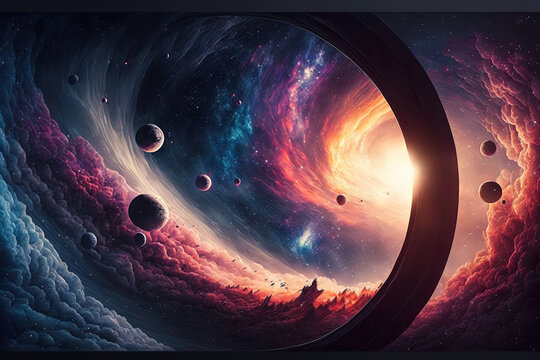Astronomers Discover 126 Exotic Exoplanets, Raising Questions About the Uniqueness of Our Solar System and Potential for Life
- Home
- Astronomers Discover 126 Exotic Exoplanets, Raising Questions About the Uniqueness of Our Solar System and Potential for Life

Astronomers Discover 126 Exotic Exoplanets, Raising Questions About the Uniqueness of Our Solar System and Potential for Life
Astronomers have taken a significant step towards answering a longstanding cosmic mystery: Is our Solar System unique compared to other stars and their orbiting planets? The recent discovery of 126 new exoplanets, featuring extreme environments and some with the potential to harbor life, adds fascinating new data to this quest.
An international team of planet-hunting astronomers spent three years analyzing thousands of measurements to calculate the masses of 120 confirmed exoplanets and six candidate planets spread across the northern sky. The result is an extensive catalog detailing just how bizarre and exotic these alien worlds are and how they compare to our own star system. The findings are detailed in The Astrophysical Journal Supplement.
Using NASA’s Transiting Exoplanet Survey Satellite (TESS) in collaboration with the W.M. Keck Observatory on Maunakea, Hawai’i, the newly released catalog features a wide array of planets orbiting different kinds of stars. “With this information, we can begin to answer questions about where our solar system fits into the grand tapestry of other planetary systems,” said Stephen Kane, University of California, Riverside astrophysicist and principal investigator of the TESS-Keck Survey, in a statement.

One of the standout discoveries is a sub-Neptune with an unusually high density, making it both extremely massive and surprisingly small. Designated TOI-1824 b, this exoplanet is nearly 19 times the mass of Earth but only 2.6 times the size of our home planet. “Planets similar in size typically have a mass between roughly 6 and 12 times the mass of Earth,” explained Joseph Murphy, a graduate student at UC Santa Cruz and co-author of the study. This “exoplanet oddity,” as Murphy refers to it, may have an Earth-like core surrounded by an unusually thin, hydrogen-dominated atmosphere, or it could have a water-rich core beneath a steam atmosphere.
Another extreme example is a super-Earth so close to its host star that it completes one orbit in less than 12 hours. TOI-1798 c orbits an orange dwarf star along with another planet, TOI-1798 b, a sub-Neptune with an eight-day orbit. “While the majority of planets we know about today orbit their star faster than Mercury orbits the Sun, USPs [ultra-short periods] take this to the extreme,” said Alex Polanski, a University of Kansas Physics and Astronomy graduate student and lead author of the paper. “TOI-1798 c orbits its star so quickly that one year on this planet lasts less than half a day on Earth.” The super-Earth likely lost any initial atmosphere due to its extreme environment and close exposure to its star’s radiation.

The team of astronomers also discovered two new planets orbiting a star similar to our Sun, one of which is a sub-Saturn planet with a mass and radius between those of Neptune and Saturn. TOI-1386 b, as it’s known, takes only 26 days to orbit its star, while its neighboring planet, with a mass close to that of Saturn, takes 227 days. “There is ongoing debate about whether sub-Saturn planets are truly rare, or if we are just bad at finding planets like these,” said Michelle Hill, UCR graduate student and lead author of a related survey paper. “So, this planet, TOI-1386 b, is an important addition to this demographic of planets.”
While the planets themselves are not visible in the data, they cause their host stars to wobble as they orbit, a phenomenon observable due to the Doppler effect. This effect allows astronomers to detect changes in the frequency of light from the stars, shifting slightly blue when moving towards the telescope and red when moving away. Radial velocity (RV) measurements enable astronomers to detect exoplanets and learn more about their properties, including mass.
“With ongoing surveys of the skies, we can expect more catalogs like this one that showcase the bizarre features of surrounding alien worlds,” said Ian Crossfield, an associate professor of physics and astronomy at the University of Kansas and co-author of the paper. “There are still thousands of unconfirmed planets from the TESS mission alone, so large releases of new planets like this will become more common as astronomers work to get a handle on the diversity of worlds we see today.”
This comprehensive catalog of exoplanets represents a major milestone in the quest to understand where our Solar System fits in the vast expanse of the universe.
- Share
